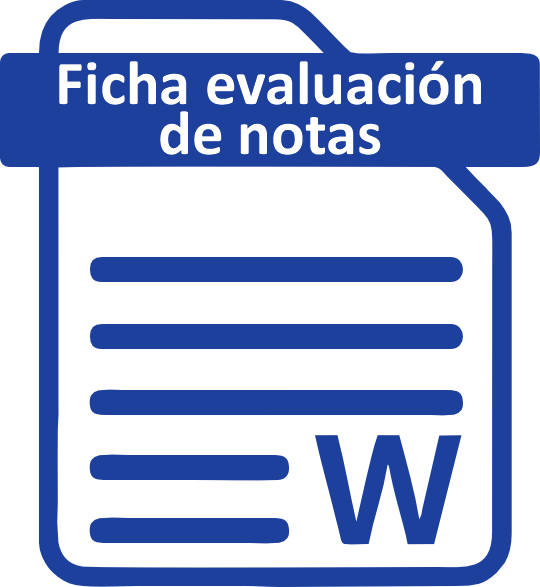Articles
Format for articles
- Articles should have a minimum length of 15 pages and a maximum of 25 pages. A maximum length of 11,000 words is considered acceptable.
- The type of font used should be Times New Roman 12-point font, one and a half spaced.
- Articles should have a specific and concise title no longer than 12 words.
- Articles should include the title in the original language and an English translation.
- The author's academic affiliation should appear below the name. The author's institutional email address should also be included. Each author should be identified with only one membership.
- An abstract, maximum twelve lines, five keywords, should be attached.
- All titles and subtitles should be numbered. Preference will be given to empirical articles with the following structure: 1. Introduction, 2. Theory, 3. Method, 4. Results, 5. Discussion, 6. Findings.
- References are presented in APA format; you can review this guide.
- At the end of the article, you must attach a brief biographical note, no longer than five lines.
- The author must send his/her ORCID identifier (in case he/she does not have one, he/she can create it here). In addition, should you have a Google Scholar profile and Scopus ID, please attach them.
Notes
Format for notes
- Notes and critical comments should have a maximum length of ten pages.
- References are presented in APA format; you can review this guide.
- At the end of the note, you must attach a brief biographical note, no longer than five lines.
- The author must send his/her ORCID identifier (if you do not have one, you can create it here). Also, should you have a Google Scholar profile and Scopus ID, please attach them.
Reviews
Format for reviews
- For reviews, the maximum length is four pages. The title of the review is made up of the complete data of the reviewed material (in the following order: Author. Title. Name of the editor, translator or compiler. Edition used. City: Publisher, year. Number of pages.)
- The author's name should be indicated at the end of the review; the author's academic affiliation should be below the name.
- If you include references, these are presented in APA format, you can review this guide.
- At the end of the review, a brief biographical note, no longer than five lines, should be attached.
- The author must send his/her ORCID identifier (if you do not have one, you can create it here). In addition, should you have a Google Scholar profile and Scopus ID, please attach them.
Copyright Notice
Authors retain their rights:
a. The authors retain their trademark and patent rights, as well as any process or procedure described in the article.
b.The authors retain the right to share, copy, distribute, perform and communicate publicly the article published in the Boletín de la Academia Peruana de la Lengua (for example, placing it in an institutional repository or publishing it in a book), with an acknowledgment of its initial publication in the Boletín de la Academia Peruana de la Lengua.
c. Authors retain the right to make a subsequent publication of their work, to use the article or any part of it (for example: a compilation of their work, notes for conferences, thesis, or for a book), as long as they indicate the source of publication (authors of the work, journal, volume, number and date).
Privacy Statement
The names and email addresses entered in the Boletín de la Academia Peruana de la Lengua will be used exclusively for the purposes established herein and will not be provided to third parties or for use for other purposes.
Promote your article once published
The Boletín de la Academia Peruana de la Lengua encourages authors to promote their articles, notes and reviews once published. Your promotion can increase the impact of your research in the field, increase the number of people who read and cite your research, strengthen your reputation, lead to collaboration with other scholars around the world, and inspire and inform readers.
Some recommended resources promoting your work include the following:
- Academic networks such as ORCID (https://orcid.org/register), Academic.edu (https://www.academia.edu), ResearchGate.net (https://www.researchgate.net/signup.SignUp.html), Mendeley (https://www.mendeley.com/?interaction_required=true). b. Social networks: Facebook, Twitter, LinkedIn. c. Personal journals. Personal blogs. d. Video abstracts or podcasts. e. Academic resumes such as CTI Vitae (https://ctivitae.concytec.gob.pe/appDirectorioCTI/).
These researcher networks are designed to support researchers in increasing their readership and citations, two important aspects that measure the impact of their work. For example, ORCID provides scholars with an identification number that, under an agreement with CrossRef, can be linked to the DOI of their publications so that they are automatically updated on their CV accessible on the orcid.org site.
Submissions of articles, notes, and reviews
To send your contribution you need to log in. If you do not have a user, you must register on the site. There you should enter your full name, your membership or academic affiliation (university with which you identify yourself), country, email, username (short name with which you can identify yourself, it is suggested to take your first name and last name), password, password repetition, indications of data consent, notifications, and contact.
Alignment with Open Science communication practices
The Editorial Team informs the authors of the alignment of the articles with Open Science communication practices. Authors complete the Open Science Compliance Form and submit it as a supplementary file to the manuscript. Compliance is verified at the following stages: initial review of manuscripts, and revisions made by editors and reviewers.
BAPL editorial flow
The Boletín de la Academia Peruana de la Lengua visibilizes its editorial and publication process: Editing and publication process. The flow of manuscript management adopted by the journal is duly documented, including the phases of submission, reception, processing, approval or final decision, and post-publication. It also incorporates the participating actors in the description.






























